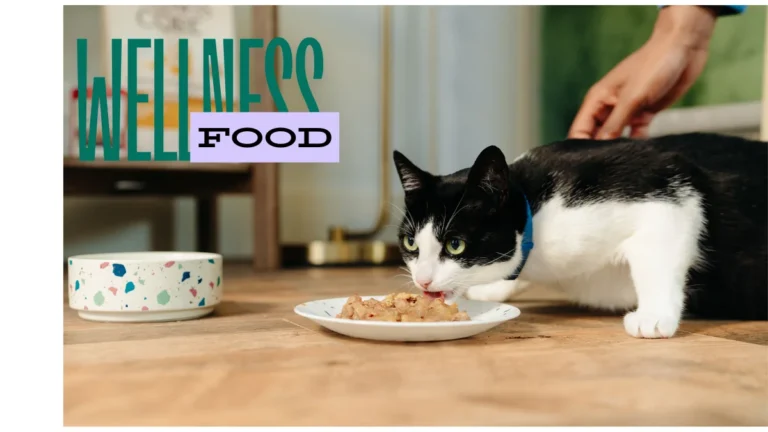Introduction:
When it comes to owning a cat, one of the most critical decisions pet owners must make is choosing the right food for their furry companions. While cats are independent creatures, their nutritional needs require thoughtful consideration. The debate between “cat or food” isn’t about choosing one over the other but understanding how to provide the best care for both. This article explores the essential aspects of cat nutrition, providing tips, expert advice, and useful resources to ensure your cat thrives.
Why Proper Nutrition is Essential for Cats
Just like humans, cats require a balanced diet to stay healthy. Nutrition plays a crucial role in your cat’s overall well-being, influencing everything from energy levels to the quality of their coat. Cats are obligate carnivores, meaning their diet must primarily consist of animal-based proteins. However, a well-rounded meal plan also includes the right balance of fats, carbohydrates, vitamins, and minerals.
A poor diet can lead to various health issues such as obesity, kidney problems, and diabetes. Therefore, it’s essential to understand the nutritional components that contribute to a healthy diet. For a comprehensive guide to cat nutrition, you can refer to our section on Cat Foods.
Understanding the Unique Nutritional Needs of Cats
Cats have different dietary needs compared to other pets like dogs. As obligate carnivores, cats require protein as the primary source of energy. Unlike humans or dogs, cats cannot convert plant-based foods into the nutrients they need for survival. This makes protein from animal sources crucial for maintaining their health. High-quality meat or fish should always be the first ingredient in your cat’s food.
Moreover, cats require specific amino acids like taurine, which are found in animal tissues. Without these, they can experience severe health problems, including heart disease and vision issues. Ensuring that your cat’s food contains these vital nutrients is essential. For a deeper understanding of cat breeds and their specific nutritional needs, explore our Cat Breeds section.
Types of Cat Food: Wet vs. Dry
When it comes to feeding your cat, there are two primary types of food: wet food and dry food. Each has its pros and cons, and the choice often depends on your cat’s preferences, lifestyle, and health needs.
Wet Food
Wet food is usually favored by cats because of its strong aroma and high moisture content. Cats who struggle with hydration can benefit from wet food, as it helps them stay hydrated. Additionally, wet food tends to have higher protein content compared to dry food. However, wet food can be more expensive and less convenient to store.
Dry Food
Dry food is a more convenient option, as it doesn’t spoil as quickly and is often more affordable. It can also help with dental health by reducing plaque buildup. However, dry food has less moisture, which can be a concern for cats that don’t drink enough water. Many pet owners choose to feed a combination of both wet and dry food to provide variety and balance.
For more information on how to choose the right food for your cat, consider checking out our Cat Food section.
The Impact of Poor Diet on Your Cat’s Health
Just like humans, a poor diet can have a significant impact on your cat’s health. An improper diet can lead to a variety of health issues, such as obesity, heart disease, and diabetes. Obesity is particularly common in cats, and it can lead to a range of complications, including joint problems, difficulty breathing, and even a shorter lifespan.
Additionally, improper nutrition can weaken your cat’s immune system, making them more susceptible to infections and illnesses. To prevent these issues, it’s important to feed your cat a diet that meets all of their nutritional requirements. For expert advice on maintaining your cat’s health, visit our Cat Health Care page.
Understanding Food Labels: What to Look For
When shopping for cat food, it’s important to understand the labels. Many brands boast claims like “high in protein” or “grain-free,” but not all products live up to their promises. The best way to ensure your cat is getting high-quality food is by looking at the ingredients list.
The first ingredient should be a high-quality animal protein, such as chicken, beef, or fish. Avoid foods with excessive fillers like corn and soy, as they provide little nutritional value. It’s also important to check for essential nutrients like taurine, omega-3 fatty acids, and vitamins A and D.
Feeding Your Cat According to Age and Activity Level
Cats’ nutritional needs change throughout their lives. Kittens, adult cats, and senior cats all have different dietary requirements. Kittens need food that supports growth and development, while adult cats need a balanced diet to maintain their health. Senior cats may require a diet tailored to support joint health, digestion, and weight management.
Additionally, an active outdoor cat may need more calories and protein than an indoor cat. It’s important to choose food that aligns with your cat’s specific stage of life and activity level to ensure they remain healthy and energetic. For more detailed information on cat care and training, explore our Cat Training section.
The Role of Treats in a Cat’s Diet
Treats are a great way to bond with your cat and reward them for good behavior, but they should never replace a balanced diet. Too many treats can lead to obesity and other health problems. When choosing treats, opt for those that are nutritionally balanced and offer health benefits, such as dental chews or treats enriched with omega fatty acids for a shiny coat.
It’s also essential to monitor the number of treats you give your cat. A general rule of thumb is that treats should make up no more than 10% of your cat’s daily caloric intake. This ensures that their main diet remains balanced and healthy.
The Importance of Fresh Water for Your Cat
While food plays a significant role in your cat’s nutrition, water is just as crucial. Cats are often not great at drinking water on their own, so it’s essential to make sure they stay hydrated. Cats who eat dry food are particularly at risk of dehydration, which can lead to urinary tract issues and kidney disease.
One way to encourage your cat to drink more water is by providing a water fountain. Many cats are more likely to drink from moving water, and a fountain can help make water more appealing. Additionally, some wet foods also contain moisture that can help keep your cat hydrated.
How to Transition Your Cat to a New Diet
If you’re planning to switch your cat’s food, it’s important to do so gradually. A sudden change in diet can lead to digestive upset, including vomiting and diarrhea. Start by mixing a small amount of the new food with their current food, gradually increasing the new food while decreasing the old food over the course of a week.
This gradual transition allows your cat’s digestive system to adjust to the new food. If your cat refuses to eat the new food or experiences digestive issues, consult your veterinarian for advice.
Seeking Professional Advice: Consulting a Veterinarian
When it comes to choosing the right food for your cat, it’s always a good idea to consult a veterinarian. A vet can provide expert guidance based on your cat’s specific health needs, age, and activity level. If you’re unsure about which food to choose, or if your cat has special dietary requirements, seeking professional advice can help ensure your cat receives the best possible care.
For more resources on pet care and insurance, check out our Pet Insurance section. It’s always a good idea to plan ahead for your pet’s healthcare needs.
FAQ:
What should I look for in the best cat food?
When choosing the best food for your cat, it’s important to focus on high-quality animal protein as the primary ingredient, such as chicken, turkey, or fish. Avoid foods that contain excessive fillers like corn, wheat, and soy. Look for added nutrients like taurine, omega-3 fatty acids, and essential vitamins and minerals. You should also consider your cat’s age, activity level, and health condition to select the most suitable food. For more guidance on selecting the right food, check out our Cat Foods section.
How often should I feed my cat?
The feeding frequency depends on your cat’s age and activity level. Kittens typically need to eat 3-4 meals a day, while adult cats can be fed 2-3 times daily. Senior cats might require more frequent smaller meals to support digestion. Always monitor your cat’s weight and health to adjust portions. Be sure to provide fresh water at all times, especially if your cat eats dry food. If you have concerns about your cat’s feeding schedule, consult a veterinarian for personalized advice.
Can I switch my cat’s food easily?
Switching your cat’s food should be done gradually to avoid digestive upset. Start by mixing a small amount of the new food with the old food, then slowly increase the proportion of the new food over a week. This gradual transition allows your cat’s digestive system to adjust without causing discomfort. If your cat refuses to eat the new food or experiences any issues, consult your veterinarian for alternative suggestions or adjustments to the diet. For more tips, refer to our Cat Health Care section.
Conclusion:
In conclusion, feeding your cat is more than just a matter of giving them food; it’s about providing them with the nutrition they need to live a long, healthy life. By understanding the nutritional requirements of cats and choosing the right food, you can ensure that your feline friend stays happy and active.
Remember, it’s not just about feeding your cat; it’s about feeding them the right food that supports their health and well-being. For more information on how to care for your cat and provide them with the best nutrition, explore our About Us page, or reach out via our Contact page.




